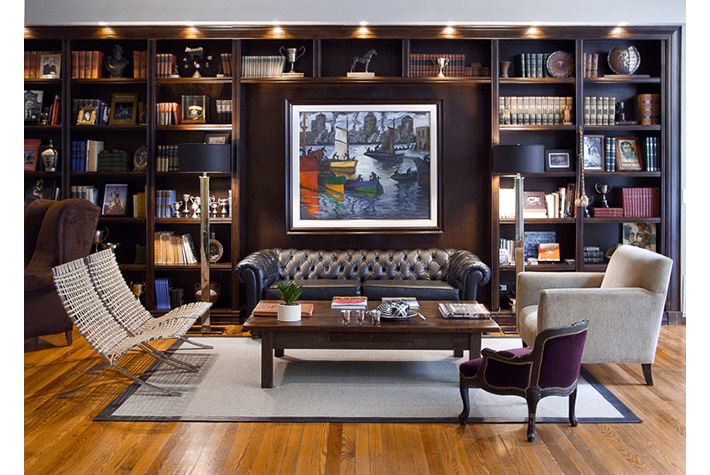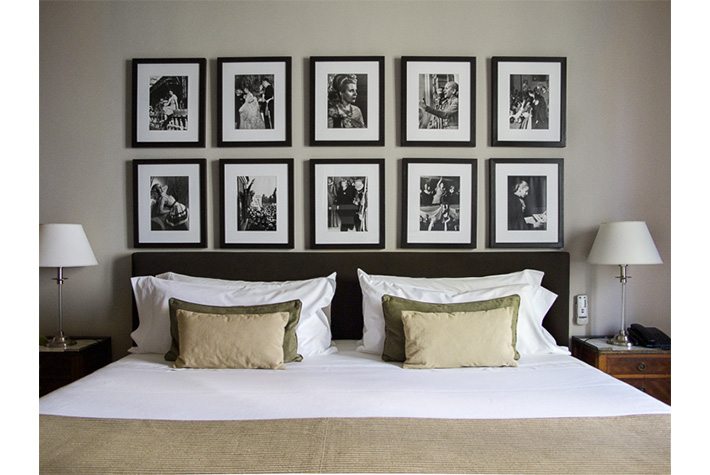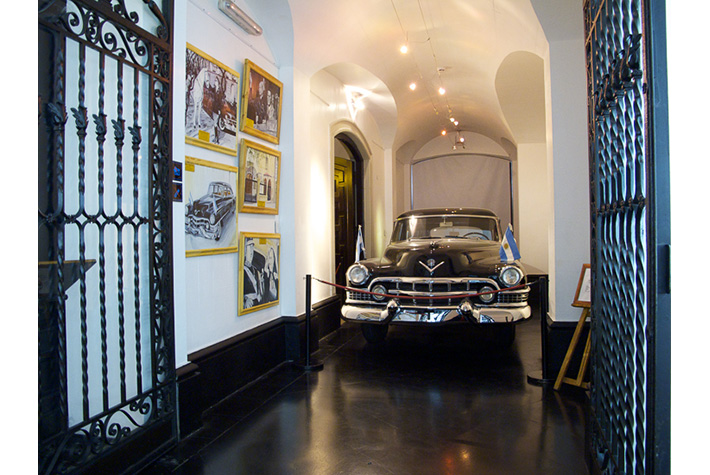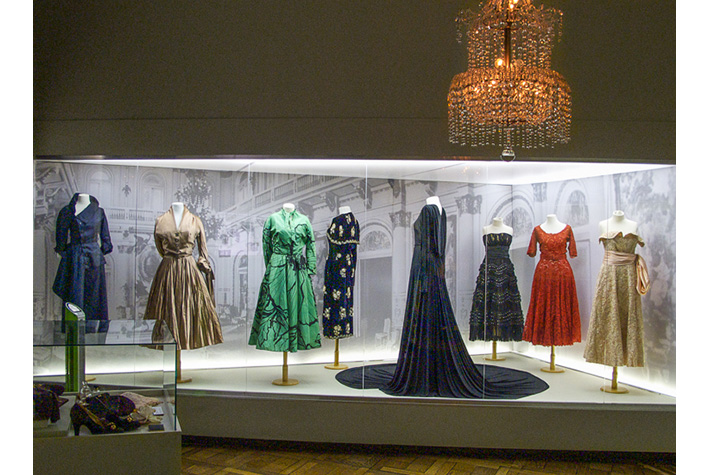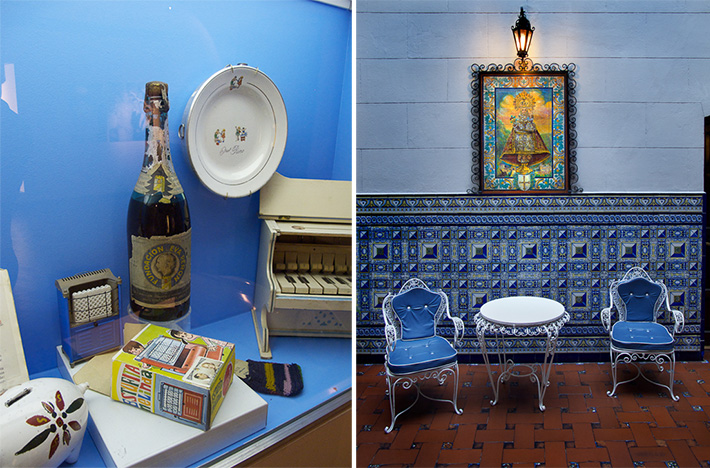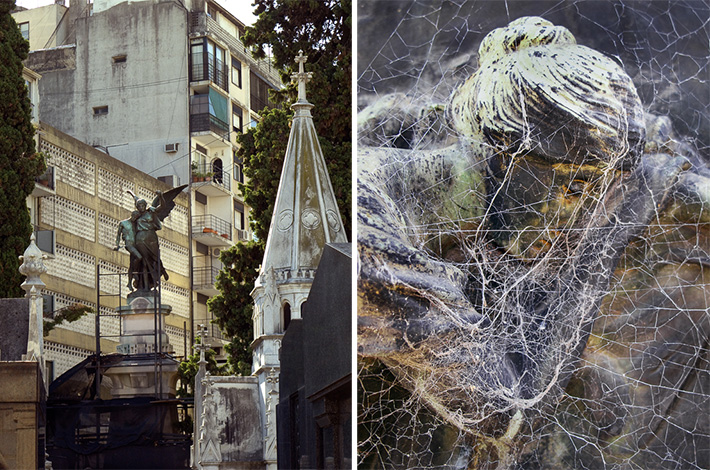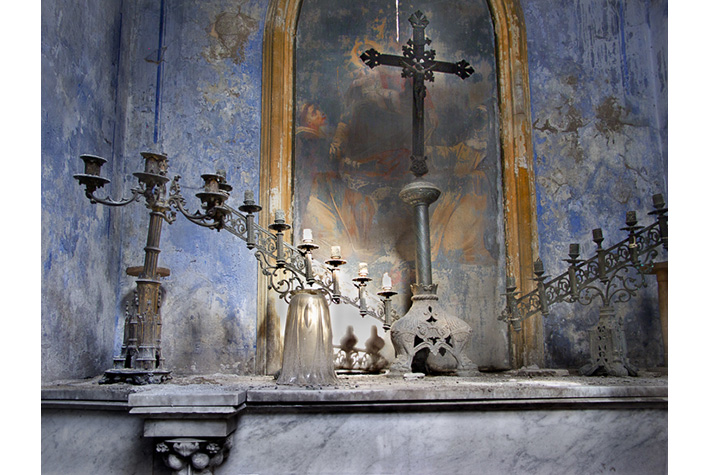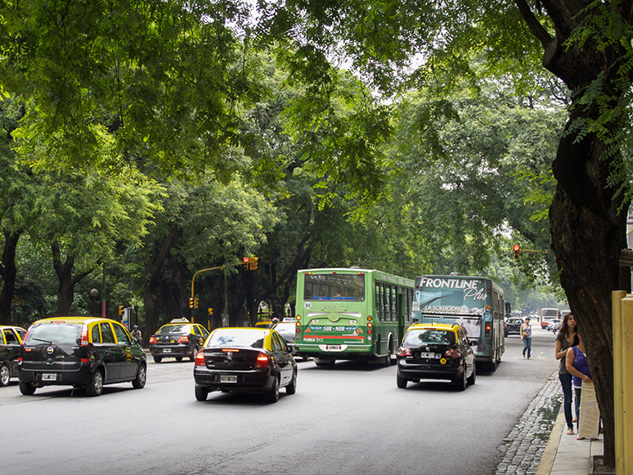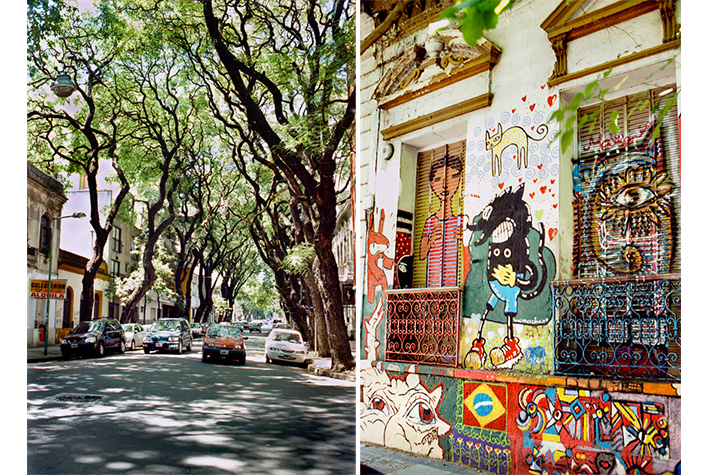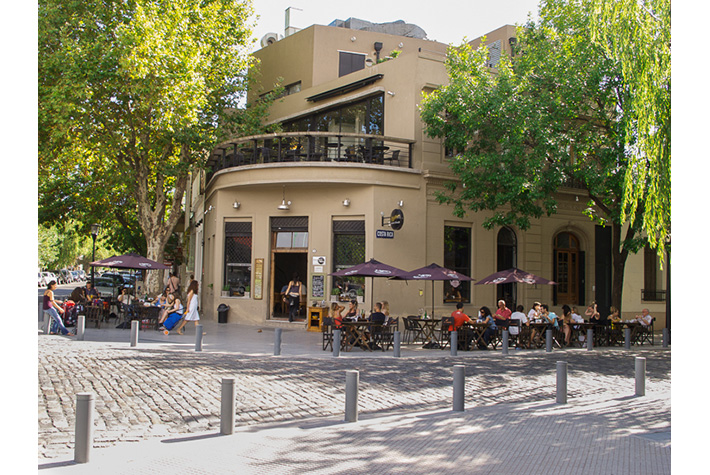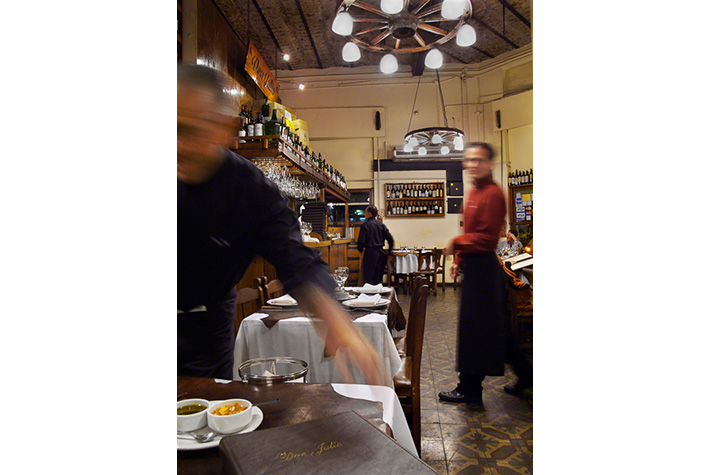Sleeping with Evita
And where to find the famous first lady’s frocks
IN THE LEGADO MITIGO,
a chic, small hotel in the hip Palermo Soho district, we’re having a cool drink in the hotel’s library/lobby when I realise I’m humming it again, thanks to an orchestral version emanating from the wall. Happily, it’s perfectly appropriate here, for each of the hotel’s rooms is themed for a leading Latin American identity and we are staying in one called La Primera Dama, otherwise known as the Eva Peron room.
Over the king-size bed are ten framed black and white prints of Evita throughout her life, starting with a portrait of her as a vivacious, dark-haired teen. Above the antique writing desk is a painted copy of a famous, rather ghastly photograph of Eva and Juan Peron together. There’s a glass display case of Evita-style paraphernalia – a pair of shoes, strands of pearls, an old bottle of Shalimar – on the wall above the spa bath. The room is furnished with an elegant faux fireplace, brown velvet and gold-leaf antique chairs and even a small balcony looking down on a courtyard if you want to pretend you’re addressing the crowds at the Casa Rosata.
If you really get a touch of the Evitas, it’s only a thirty minute walk from here to the Museo Evita, a handsome mansion, formerly a lodge for Argentinean women newly arrived in the city, which was dedicated to Evita in 1948. It houses spectacular displays of her gowns, hats and shoes, a replica of the kitchen of the Fundacion Eva Peron and the chapel where her funeral service was conducted, as well as the hulking 1951 Cadillac in which she was driven about town, throwing peso bills to the crowd. One room shows clips from the films she made before she married Peron, proving beyond doubt what a rotten actress she was.
Ironically, the Legado Mitico, where I’m playing out my Evita fantasies, is situated in the old barrio of Palermo, which would be unrecognisable to her these days. In the 19th Century, the suburb was home to immigrants from Poland, Armenia, Ukraine and Lebanon, as well as to many of the families from Spain and Italy that flooded into agriculture-rich Argentina to make a living. The streets bear the names of Latin and European countries.
Cruel dictatorships and the country’s many economic struggles led to neglect, but that means the single-story villas, corner bars and cobbled streets that were built in a more prosperous century survive, and they are now filled with busy cafes, fashionable bars and boutiques selling the best work of Argentina’s young designers. While most of the facades have been restored, others lie in picturesque abandon, wrought iron rusting and paint peeling to reveal successive layers of colour. The locals have a taste for dramatic graffiti – a modern expression of Palermo’s bohemian roots.
The barrio now includes trendy Palermo ‘Soho’ and Palermo ‘Hollywood,’ named for the film distributors and TV and radio producers who have set up business there in recent decades. Palermo Soho was once bustling with small industries, such as mechanic’s workshops and iron foundries, and some are still operating, while others have been reclaimed, turned into art galleries and airy restaurants. Despite the gentrification, though, Palermo still feels very much like a real neighbourhood, with old ladies in aprons sweeping the pavement and elderly gentlemen lingering for hours at tables under the extravagant pink orchid trees and jacarandas.
In summer – although one is warned to avoid the heat of January – the ambience is sultry, casual, youthful, knowing. Busloads of tourists do not crowd the streets like they do the more famous barrios of San Telmo and La Boca. The tango here is mostly found in local dance halls, or milongas, where it’s touching to see old couples embrace.
HARD TO BELIEVE BUENOS AIRES HAD ANY BEGINNING
I FEEL IT TO BE AS ETERNAL AS AIR AND WATER
– JORGE LUIS BORGES
The great Argentinean poet Jorge Luis Borges (1899-1986), was born and lived in Palermo most of his life. A major street is named after him and it’s worth visiting El Prefidero, the old café where he would take his daily coffee. ‘Hard to believe Buenos Aires had any beginning/I feel it be as eternal and air and water,’ he wrote. You could stand on any corner and still get a sense of the city he captured in poems like ‘Street with Pink Corner Store.’ If you feel a bit ambivalent about Eva Peron, there’s always the El Escritor room in the Legado Mitico, dedicated to Borges.
To complete the homage to Eva Peron, take a taxi a short distance to the magnificent Recoleta cemetery, where her body lies in the family mausoleum. Grab a free map from the front office and wander among the crypts, marvelling at the extravagance invested in giving both dignitaries and ordinary partenos (citizens) a final resting place. (It’s funeral gridlock the afternoon we visit, with successive processions of soldiers in full regalia, priests and mourners squeezing into the narrow alleys between plots.)
Evita’s bronze mausoleum is surprisingly modest and difficult to find but even if you don’t manage to stumble across her, this fantastic cemetery in an upscale neighbourhood is Buenos’ Aires number one attraction for those with a penchant for the beautifully ghoulish. Grandiose burial chambers, temples and sepulchres share prime real estate with crumbling crypts and cobwebby reliquaries. Many of the heavily carved coffins are exposed, which makes it deliciously creepy.

